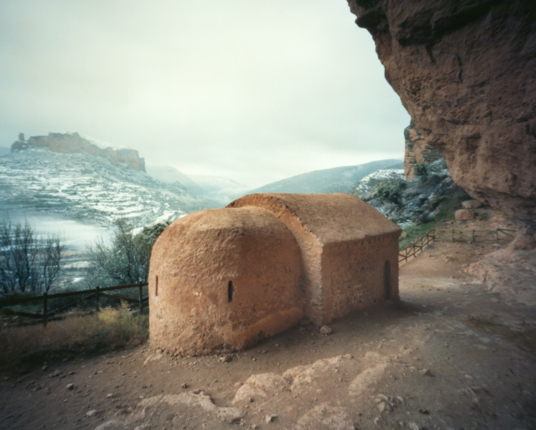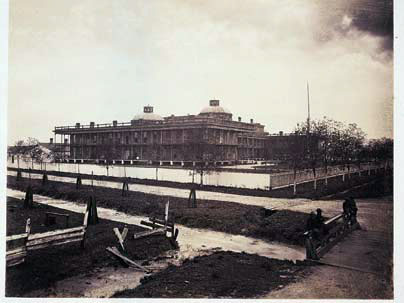The 12th International Photo Competition on “Earthen architectures: landscapes of architectures” is an initiative of the Municipality of Casalincontrada, in the Italian province of Chieti and the Documentation Centre on Earth Architectures, Terrae onus Association The “rediscovery” of the knowledge linked to earthen architecture recomposed in images, like tiles of a mosaic made of people, things, material and places. Images that could be interpreted as “surviving structures” or “new scenarios”, as well as architectures of the territory, memories and situations.
The 10th International Photo Competition
CEDTERRA is hosting the The 10th International Photo Competition on “Earthen architectures: landscapes of architectures”. The competition is an initiative of the Municipality of Casalincontrada, in the Italian province of Chieti and the Documentation Centre on Earth Architectures, Terrae onlus Association The “rediscovery” of the knowledge linked to earthen architecture recomposed in images, like tiles of a mosaic made of people, things, material and places. Images that could be interpreted as “surviving structures” or “new scenarios”, as well as architectures of the territory, memories and situations. For more information visit: http://www.casediterra.it/concorsofoto.htm
La Ermita de Viguera

Photo: Sebastian Schutyser
The ermita of Viguera in La Rioja, Spain, captured here with a pin-hole camera by photographer Sebastian Schutyser, was constructed in the 13th century and contains important mural paintings within. An overhanging rock cliff protects the ancient adobe structure from the elements, which is only accessible by steep 15 minute climb from the nearest road. Schutyser writes of the ermita:
The Spanish word ermita [English: hermitage], has a similar structure and meaning in all languages derived from Latin. It always refers to an uninhabited or isolated place, a location for spiritual retreat. In Romance languages it comes from the Latin word eremus, tracing back to the Greek eremos, which means deserted. In Spain, their use has shifted throughout the centuries, but they have always been isolated sanctuaries or chapels. Hermits inhabited them in seclusion, or in other times, in small groups. Other hermitages were built by pilgrims, who tried to invoke divine protection on their journeys. Finally, some hermitages were erected for pastoral cults, or to house religious brotherhoods. At present many still have the cult of a saint celebrated in them once a year.
The photo is part of a larger photographic collection of ermitas by Schutyser, 575 Romanesque and Pre-Romanesque ermitas total, who is hoping to assemble a book from these photographs.
9th International Earth Architecture Photography Competition
The Centro di Documentazione sulle Case di Terra is hosting the 9th International Earth Architecture Photography Competition with the theme “Le case di terra paesaggio di architettura”.
CALENDAR:
Entry deadline: 30/06/2010
Judges meeting: 07/08/2010
Announcement of results: 31/08/2010 on the Internet page: www.casediterra.it
Works exhibition: dal/from 18/09/2010 al/to 30/09/2010 presso il / in the CED Terra Casalincontrada
Opening: 18/09/2010
Prize-giving: 18/09/2010
JURY:
President of jury:
Mr Maurizio Morandi – University of Firenze
Jury
Mrs Concetta Di Luzio – Mayor of Casalincontrada
Mrs Stefania Giardinelli – Terrae onlus Association
Mrs Gaia Bollini – Città della terra cruda National Association
Mr Gianni Ortolano – Member of Fotoclub Chieti
TEMPORARY JUDGES:
Mr Gabriele Esposito – Associazione Terrae onlus
Mrs Caterina Buccione – Associazione Terrae onlus
PRIZES: FIXED SUBJECT: “RAW EARTH ARCHITECTURAL STRUCTURES” One single section: B/W and Colour
1° Classificato/1st prize winner: Euro 515,00
2° Classificato/2nd prize winner: Euro 260,00
3° Classificato/3rd prize winner: Euro 130,00
To the five outstanding photographs: a book on earthen architecture
SPECIAL PRIZES
– To the best photograph on new earthen architectural structures;
– To the best photograph on earthen architectural structures in the Abruzzo Region;
– To the best photo of earthen architecture in Italy;
– To the best photo of earthen architecture in the world;
– Special prizes for schools.
PRESENTATION
The 9th International Photo Competition on “Earthen architectures: landscapes of architectures” is an initiative of the Municipality of Casalincontrada, in the Italian province of Chieti and the Documentation Centre on Earth Architectures, Terrae onlus Association The “rediscovery” of the knowledge linked to earthen architecture recomposed in images, like tiles of a mosaic made of people, things, material and places. Images that could be interpreted as “surviving structures” or “new scenarios”, as well as architectures of the territory, memories and situations.
For more information visit the competition website.
New Orleans Marine Hospital 1867 was Rammed Earth

The all-iron Marine Hospital, innovative in its day, yet doomed by construction costs. Photo / Theodore Lilienthal
A new book of essays, New Orleans 1867: Photographs by Theodore Lilienthal, on rediscovered photographs of New Orleans in 1867, written by the curator of architecture and design at the MIT Museum, shows how the city tried to rebuild its economy and retrieve its prestige in the aftermath of war. One of the photographs is of a vast, domed building under construction at the edge of the city turned out to be the Marine Hospital, New Orleans’ version of Boston’s Big Dig. The iron building, insulated with rammed earth, was thought to be lighter and therefore better suited to swampy local conditions, as well as fireproof. The proposal was innovative but the technology was costly, a sinkhole of federal money. Never completed, eventually demolished, the hospital was one of the most advanced buildings of its time, but it has been forgotten today.

Butabu: Adobe Architecture of West Africa
Butabu: Adobe Architecture of West Africa: Photographs by James Morris presents 50 large-scale images of structures from monumental mosques to family homes. An exhibit of the photos runs through July 15 at the UCLA Fowler Museum of Cultural History in Los Angeles. For more information call (310) 825-4361 or visit www.fowler.ucla.edu or buy the book.
6th International Photography Competition on Earthen Architecture
Il Centro di Documentazione sulle Case di Terra del Comune di Casalincontrada with the l’Associazione Terrae Onlus and the Fotoclub Chieti promotes the 6th International Photo Competition of Works of Earthen Architecture.
